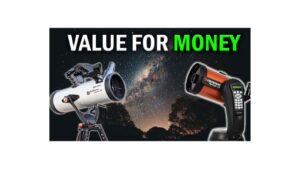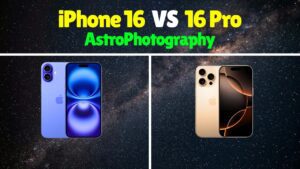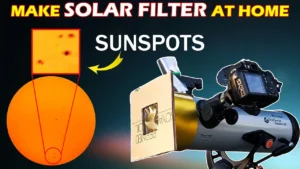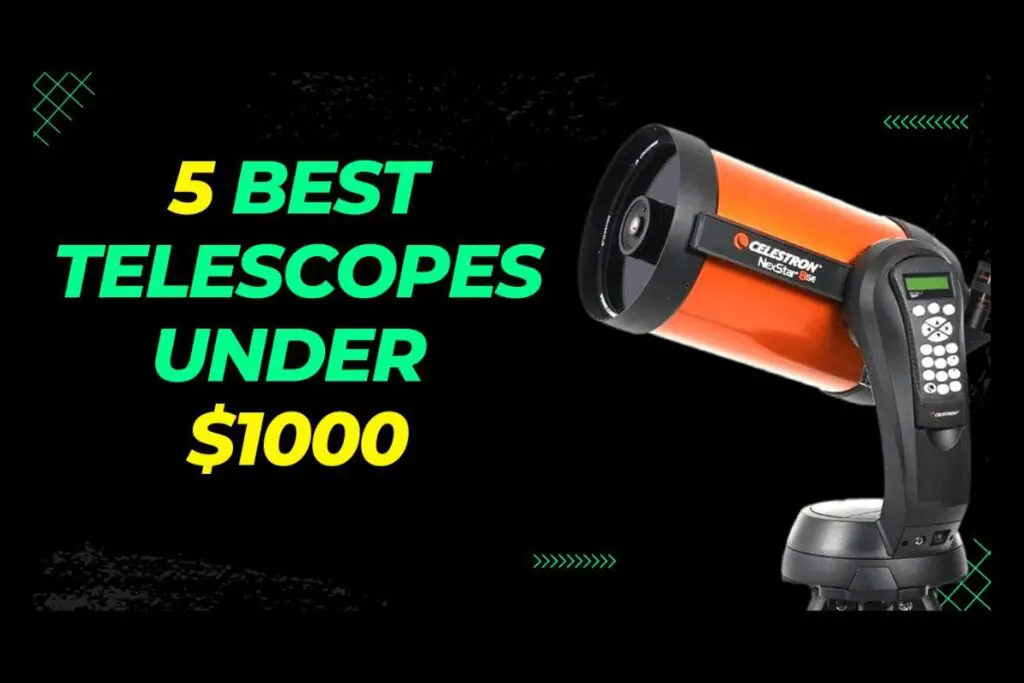
If you have a budget of about $1000, then you can easily find a good telescope in this price range. Previously, we covered telescopes up to $500. In the $1,000 price range, there is quite an improvement in quality and performance.
Here is the list of the 5 best telescopes you can buy for under $1000.
Celestron NexStar 5SE
This is a 5-inch telescope from the SE series of the Celestron. It has an aperture of 125mm and a focal length of 1250mm. Its focal ratio is 10. The highest useful magnification of this telescope is 295X, and the lowest useful magnification is 18X. The weight of the optical tube assembly is 6 kg. The telescope has a computerized single-fork alt-azimuth mount. The load capacity of this mount is 10 lbs or 4.54 kg. The total weight of the kit is 17.5 lbs or around 8 kg.
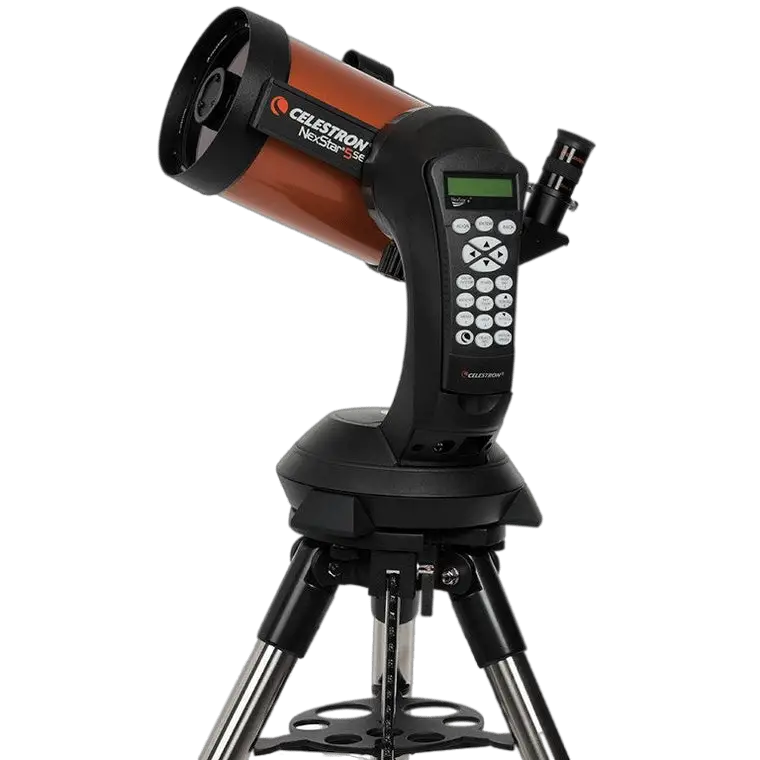
With this telescope, you can see the moon and nearby objects. You can also see planets like Jupiter, Saturn, Mars, and Venus. In deep space, you will be able to see bright objects such as the Orion nebula and star clusters. But as the aperture is only 5 inches, do not expect too much from the deep-space visuals. The telescope has an alt-azimuth mount, which is why long-exposure astrophotography is not possible with this telescope. If you want to do long-exposure astrophotography with this telescope, then you will need to buy a wedge.
Celestron StarSense Explorer 8-inch Dobsonian
This is one of the Dobsonian telescopes on the Celestron. Dobsonian telescopes are good value for money, and they offer maximum benefits for the price you pay. If you are on a tight budget, a Dobsonian telescope is the best option for you. We have covered Dobsonian telescopes in detail in this article.
This 8-inch starsense Explorer Dobsonian is an excellent telescope. Celestron’s Starsense technology is amazing; we have reviewed it here. With starsense, it is very easy to use a telescope, even for extreme beginners. Anyone can easily navigate through the night sky with the help of starsense.
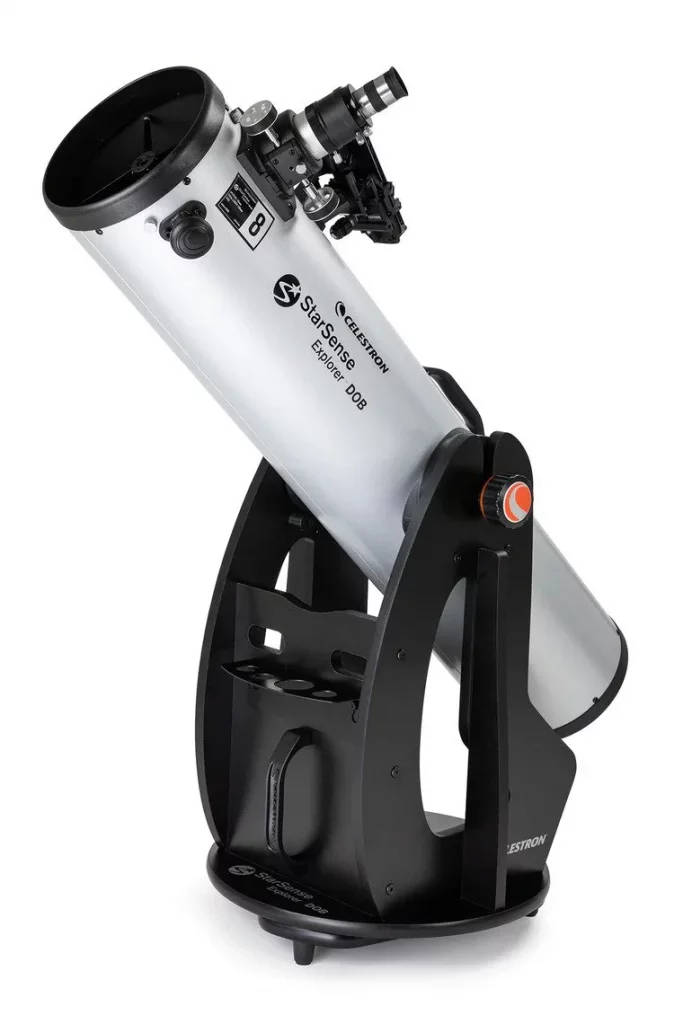
This telescope has an aperture of 203mm and a focal length of 1200mm. Its focal ratio is 6. The highest useful magnification of this telescope is 480X, and the lowest useful magnification is 29X. The weight of the optical tube assembly is 20.6 lbs or around 10kg.
You can see the moon and planets like Jupiter, Saturn, Mars, and Venus with clear views through this telescope.
Celestron StarSense Explorer, 10-inch Dobsonian
This one is exactly the same as the previous 8-inch model; the only difference here is the aperture, which is 254mm. The focal length is 1200mm, and the focal ratio is 5. The total weight of the telescope kit is 25kg. Read the full review of these two telescopes here.

Sky-Watcher Skymax 150 Pro
The Sky-Watcher 150 telescope is not completely ideal for beginners. But with a little bit of effort, this telescope can also be used by beginners. The telescope is a Maksutov-Cassegrain-type telescope. We have explained these different types of telescopes in these videos; make sure you watch them.
This telescope has an aperture of 150 mm or around 6 inches. Its focal length is 1800 mm, and its focal ratio is 12. This telescope is very compact, and you get only the optical tube assembly with it. You have to purchase a mount separately for this telescope.
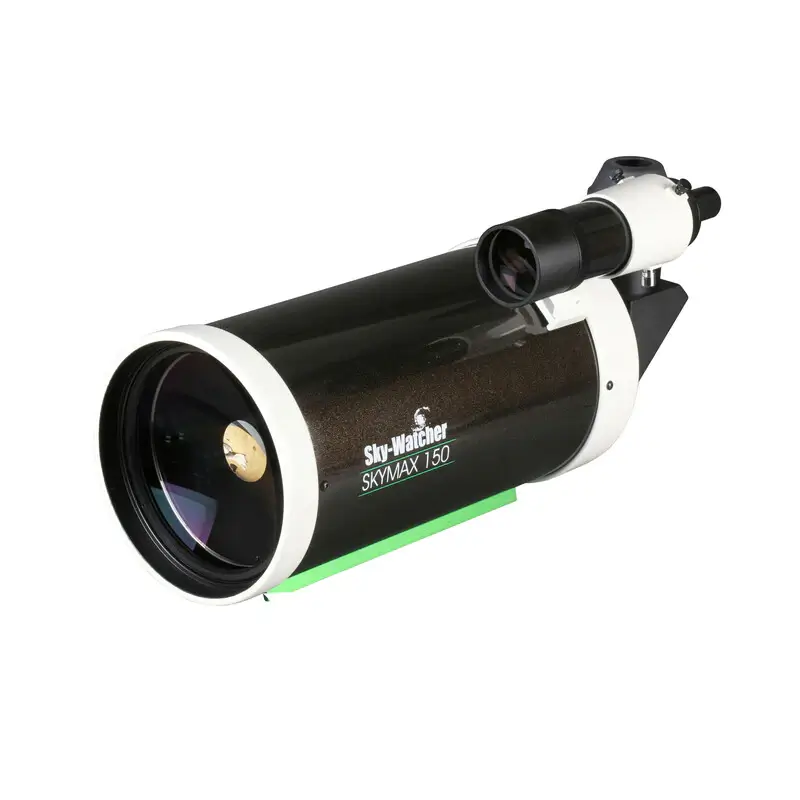
Mak telescopes have a very long focal length and are very good for observing the planets and nearby objects in great detail. The higher focal length helps you zoom in on the nearby objects to observe the small details of those objects.
This telescope is perfect for people who really want to look at planets and nearby objects in great detail.
Celestron NexStar 6SE
Celestron’s NexStar series is very popular for being a high-quality, best-performing telescope. This is the second-last model in the SE series. It can be called an all-rounder telescope, which fulfills so many sky-watching needs. It can be used by beginners as well as more advanced astronomers.
As this telescope fulfills many requirements for an astronomer, you will find it very difficult to outgrow it. Setting up this telescope does not take much time. The build quality of the telescope is so good that it will last you for years to come. It has a 1500mm focal length; the 6SE also tends to have a much wider field of view than its larger siblings and is, therefore, more flexible and comfortable for viewing.
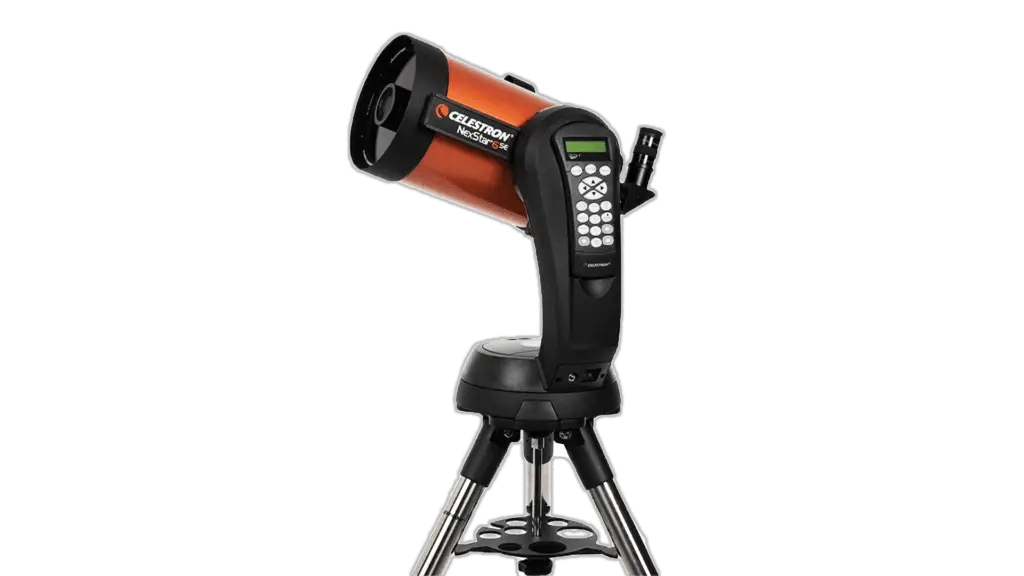
This is one of the best telescopes you can buy. Read the full review of the Celestron NexStar 6SE.
If you are looking for a telescope specifically for astrophotography then you need to check this article. You can also find the best suitable telescope for you with our telescope search tool.

